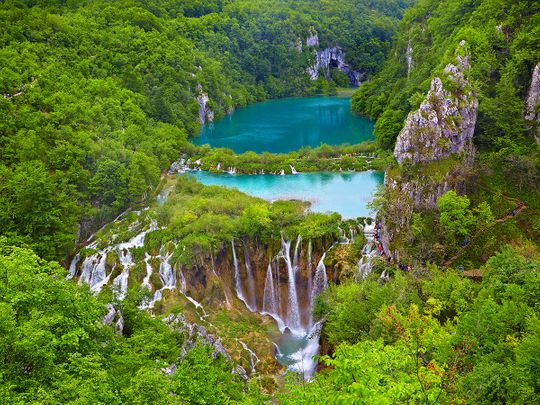
Forget visiting famous cities around the world for your bucket list. Or climbing to the summits of mountains for a head rush. The latest trend is lake bagging – taking a dip in beautiful lakes all around the world.
Click start to play today’s Crossword, where you can identify lakes from various continents.
Similar to peak bagging, where adventure-seekers tick off a list of mountain peaks to summit, lake bagging has swimmers hunting down bodies of water to swim in. But if wild swimming isn’t for you, get acquainted with these 5 beautiful and somewhat bizarre lakes from around the world that stand out for their unique features:
1. Plitvice Lakes, Croatia
A sequence of 16 turquoise lakes, the Plitvice Lakes (pictured above) are connected through waterfalls and caves. Each one is separated from the rest through thin dams of travertine, an unusual form of limestone. Nestled in the forests of the Dinaric Alps, they are the central attraction of Plitvice Lakes National Park. Since the lakes act as a reservoir for drinking water, swimming is forbidden here.
2. Laguna Colorada, Bolivia
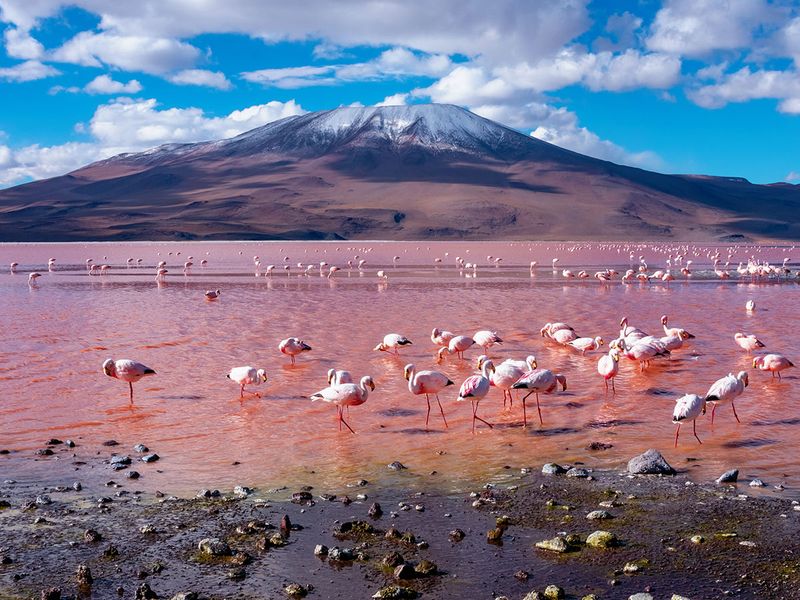
About 10km wide, the salty Laguna Colorada sports an orange-red hue because of the red algae that grows in the water. Occasionally, the water turns green instead, when a different sort of algae becomes more prominent due to temperature changes and differences in salt content. The lake is home to large populations of James’s flamingos, which feed on the algae. You can also spot white islands in the middle of the lake – white borax deposits that are a byproduct of saltwater evaporation.
3. Nyos Lake, Cameroon
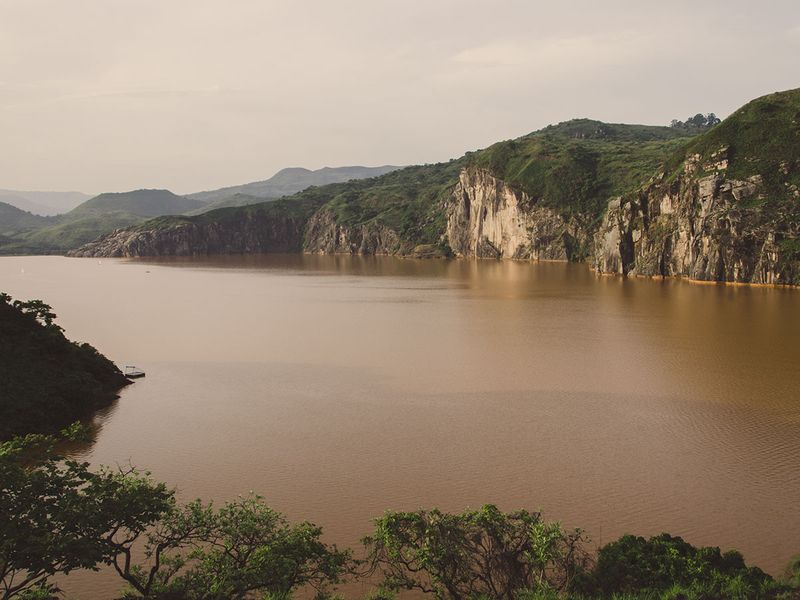
Considered to be one of the world’s only known exploding lakes, this is definitely a body of water that swimmers need to stay away from. The lake lies by the side of an inactive volcano, above a pocket of magma that slowly leaks carbon monoxide into the lake. If the region experiences seismic activity, scientists believe the motion can agitate the water, causing the carbon monoxide to balloon out of the lake in a cloud of gas, known as a limnic eruption.
4. Lake Balkhash, Kazakhstan
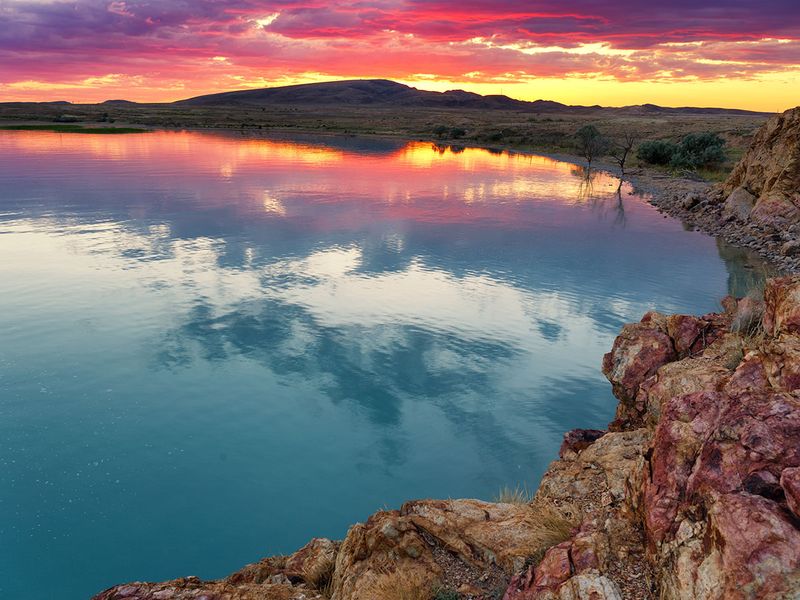
This brilliant-blue lake holds the unique title of being both a freshwater and saltwater lake. The distinction can be seen in its colour – the western half (freshwater) is wider, shallower and milky green in colour, while the eastern side (saltwater) is narrower, deeper and dark blue. The strange phenomenon is due to its water source – the Ili River – which drains into the lake, creating a constant flow from west to east. But since it has no outflow, the water accumulates on the eastern side and evaporates, becoming more saline.
5. Lake Baikal, Russia
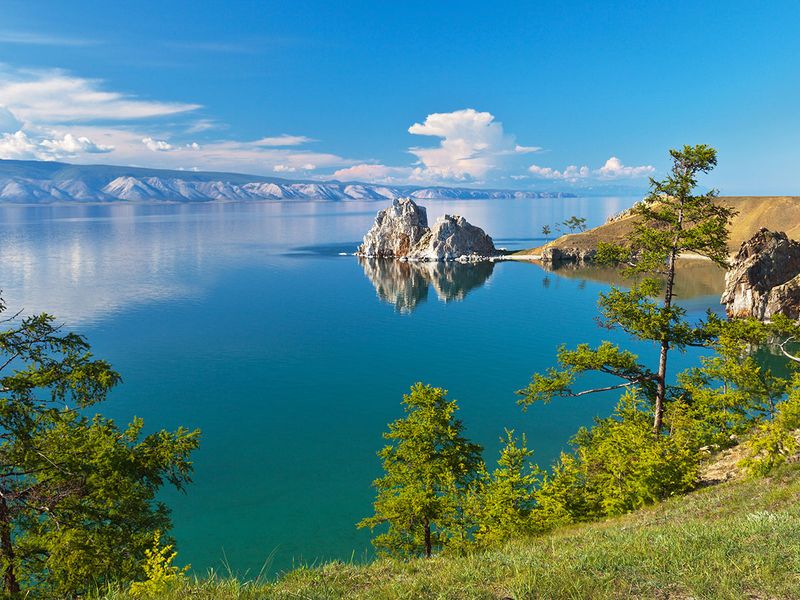
At 5,387 feet deep, Lake Baikal is considered to be the world’s oldest lake – at least 25 million years old! Located in southern Siberia, it contains about 20 per cent of the world’s unfrozen freshwater, according to the United States Geological Survey. Its ecosystem supports over 2,000 plant and animal species, two-thirds of which, exist nowhere else on the planet. It’s no surprise then that the region was declared a World Heritage Site in 1996 by United Nations Educational, Scientific and Cultural Organisation (Unesco).
Did you know about these lakes? Play today’s Crossword and tell us at games@gulfnews.com.






